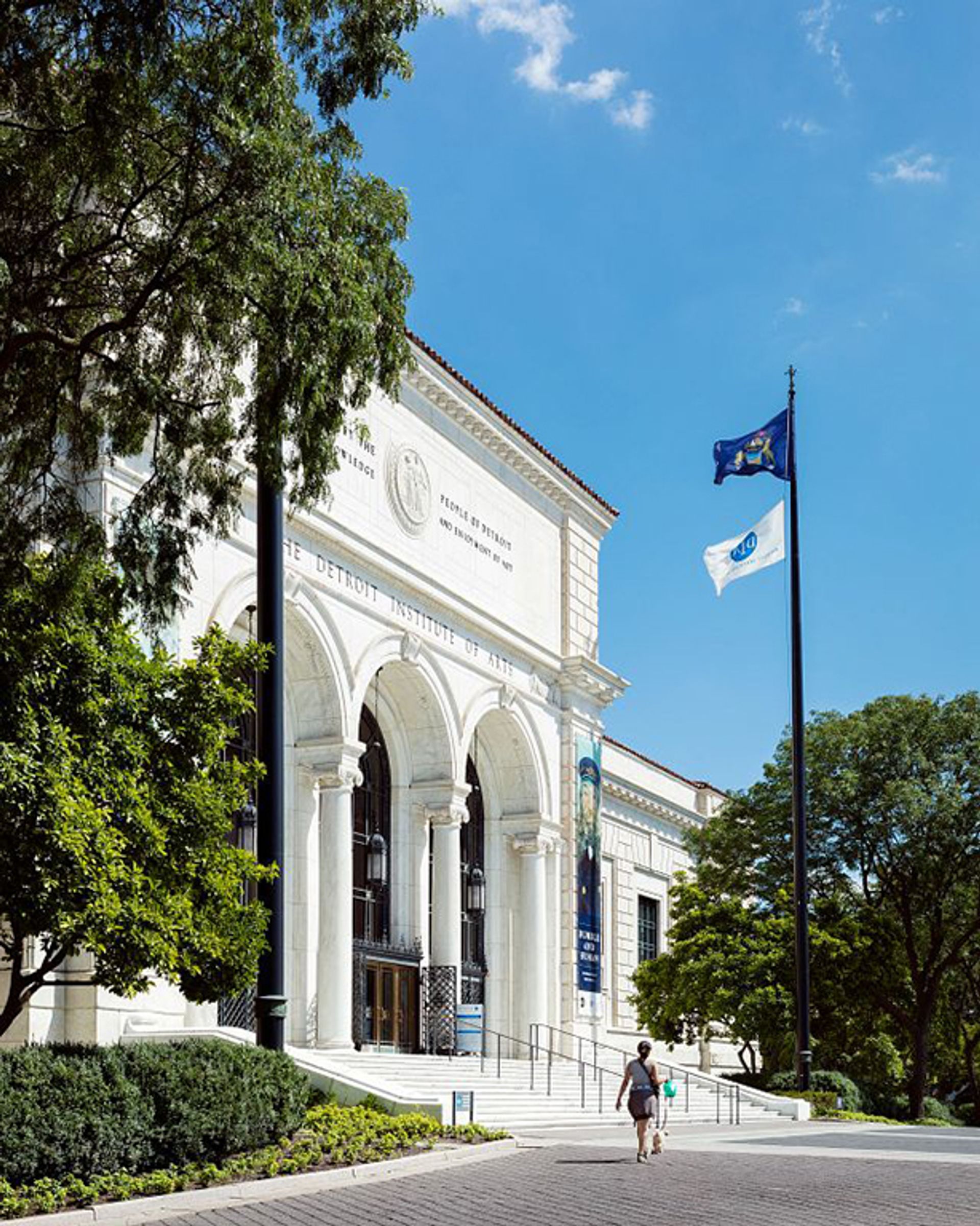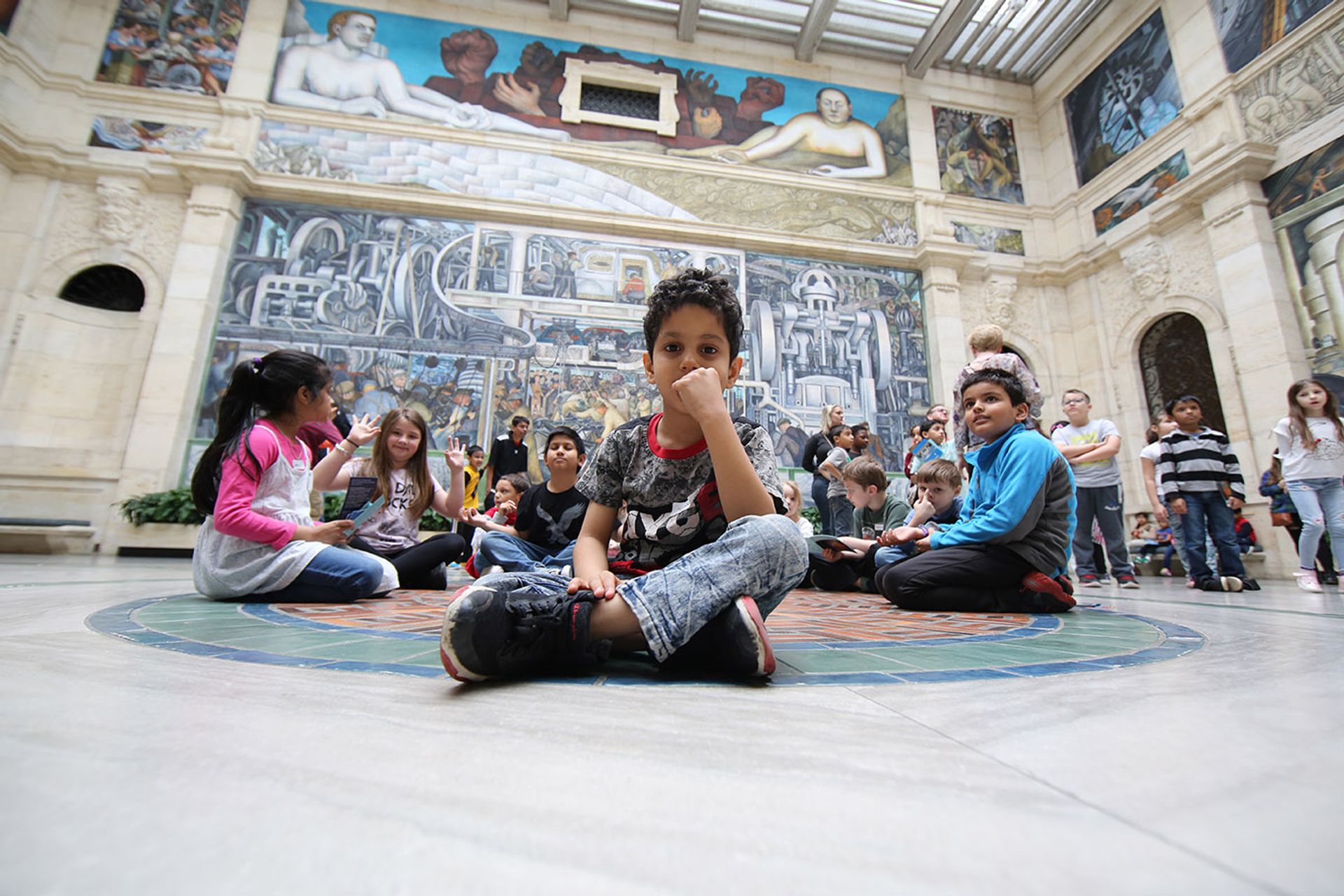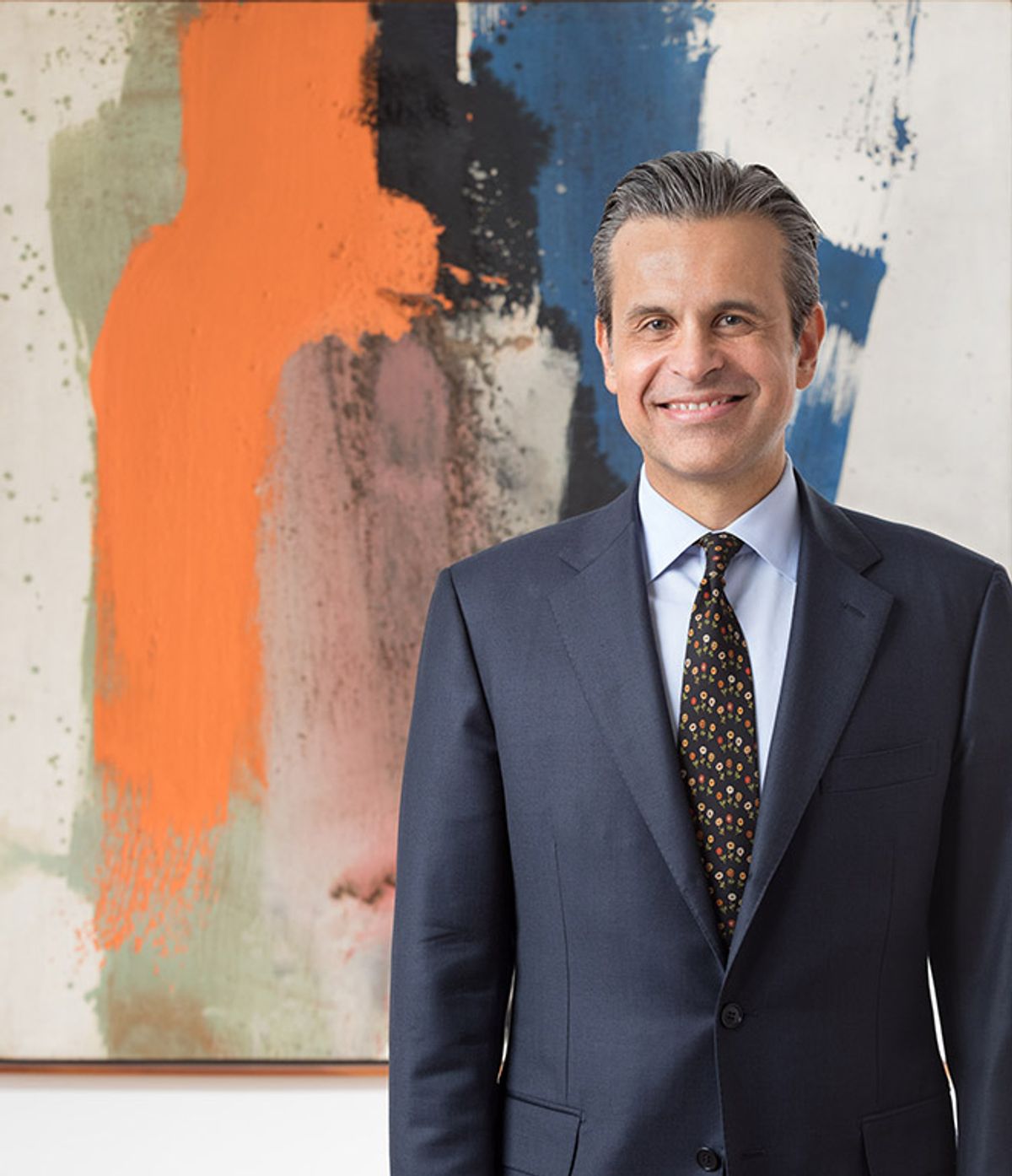Salvador Salort-Pons, the director of the Detroit Institute of Arts (DIA), has been caught in the cross hairs recently, with news reports detailing the results of an independent inquiry into allegations of dictatorial behaviour and other missteps. The law firm that carried out the review found that Salort-Pons was intolerant when staff members voiced dissonant views and retaliated against those who disagreed with him.
Some employees of colour told the firm’s investigators that race “was a factor in the way Salvador engaged with them” and that he had “a lack of facility with race-related issues”. The investigation also revealed that women in managerial and professional positions at the museum were departing at a significantly higher rate than men. A recording of the law firm’s presentation of its findings at a board of directors meeting last November was leaked to the media last month.
The museum says it has taken steps since the inquiry to ensure that all employees are heard and that its workplace “fully embodies fairness, inclusion, consistency and respect”. It adds that its board of directors is monitoring Salort-Pons’s performance to ensure progress toward those goals. Six members of the board have resigned to protest the board's decision to maintain him as director.
Last year the director was also the target of a whistleblower complaint accusing him of a conflict of interest for exhibiting an El Greco painting owned by his father-in-law at the museum following the display of another work by him.
The Art Newspaper requested an interview with Salort-Pons about the furor over his leadership and his broader goals for the DIA, and the museum agreed to have the director respond to questions formally via email. Here are excerpts of the exchange.
The Art Newspaper: It’s been quite a tumultuous year for you, with questions being raised about the display of two paintings owned by your father-in-law and revelations surrounding the recent inquiry by a law firm into complaints about your management style. Can you talk about these two controversies and how you have weathered them?
Salvador Salort-Pons: Yes, it has been a challenging year across the museum industry, where we have seen the need to rethink our work and our role in society. I am grateful for the opportunity to learn and grow, and for the institution as a whole to do the same.
As to the loaned works, one under the previous director, and one during my tenure, the independent inquiry found that both art works were loaned according to board-approved policies and practices and no conflict of interest was found.
Have you had extensive conversations with your board of directors about management style or policies since the independent review? Was there any sense that things needed to change in any respect? If so, what requests or demands have they made of you regarding leadership?
Working with the board of directors, several key actions were taken by the board in response to the review:
The process of review has led to a new way for any member of the staff to confidentially bring concerns forward to our board of directors. The board named board vice chair Rhonda Welburn, a retired attorney and art collector, as board employee relations liaison to provide employees a direct channel to our board of directors.
The board has also established a confidential hotline to report any possible discrimination, retaliation or other similar workplace issues to the board employee relations Liaison, at any time. These initiatives are intended to help the board of directors monitor and guide workplace culture improvements.
My performance is regularly monitored by the board’s executive committee to ensure progress continues to be made in fostering a workplace where all employees can thrive. To this end, since September 2020, I have been working regularly with a leadership coach to support my efforts in creating a work environment where all employees feel valued for the talents, skills and unique perspectives that they bring to the DIA.
Have you taken any steps to counter the observation in the legal firm’s report that you are intolerant of dissent and prone to retaliating against those who complain? Has the confidential hot line that has been set up to field complaints about workplace issues led to the board’s posing any questions to you?
I spoke to the staff about this, and I apologised to anybody who felt a sense of retaliation in our workplace. It was never my intention. Moving forward, we encourage any team member who has concerns about workplace issues to report those to the board employee relations liaison via the hotline.
I am appreciative of those that have connected with our board employee relations liaison via the confidential hotline, and the board and I have included those perspectives in our discussions.

The Detroit Institute of Arts Detroit Institute of Arts
Did you mount a defence against any of the findings detailed in the report? Did you find any of its conclusions unfair? For example, do you believe that women have experienced significantly more dissatisfaction in their work at the museum? To what do you attribute their higher attrition rate in comparison to men? Do women face impediments in finding job satisfaction at the Detroit Institute of Arts?
Whether the report’s conclusions were unfair, that is not the important question for me. At this time it is crucial that we focus on creating a work environment that fosters inclusion, diversity, equity and accessibility. Each employee is very important for the institution, and I want to ensure each one of them has the tools to succeed as we continue to meet the DIA’s vision, mission and goals.
Do you agree with the allegations that you were inadequately sensitive on racial issues? How do you respond to the observation in the report that people of colour felt that their race was a factor in their interactions with you? Is it correct that you ordered the hiring of a black staff member without regard to qualifications? And can you describe the racial makeup of the museum’s staff, and specifically of the leadership team, and of the curatorial staff? Do any changes need to be made there?
As a leader, it is imperative that I continuously learn and evolve when it comes to cultural competencies and issues of inclusion, diversity, equity and accessibility, and that I demonstrate the importance of that work across all levels of the institution. We are an equal opportunity employer and have only hired qualified employees. Hiring decisions come from a search committee, which include staff members and often board members.
A museum-wide initiative that began in 2015 addressed the diversification of the board of directors, acquisitions of art by African American artists and the institution of paid internships to expand access to the museum industry. In 2019 the DIA was awarded an Institute of Museum and Library Science (IMLS) grant in the area of diversity, which is currently being implemented.
As our nation’s attention has been drawn to inequity and systemic racism over the past year, it is critical that the work we had started a few years ago moves forward with additional urgency and internal focus. The next step for real growth and change is to apply and permeate this internal learning throughout our governance, programming, exhibitions and overall visitor experience. We recognise the need to define and articulate our philosophy and vision for IDEA work and develop a diversity and inclusion strategy as a road map to unify efforts across the museum. This three-year project, launched in 2020, will guide the DIA in becoming a museum of relevance that serves and hires diverse audiences.
As a leader, it is imperative that I continuously learn and evolveSalvador Salort-Pons
[The DIA provided the following employment statistics: The museum’s turnover rate was 9.6% in 2019 and 6.13% for the first six months of 2020. Its staff is 61.3% female, and 51.5% of its professional and administrative employees are female. It has 14 curators or curatorial research assistants, of whom four are men, 10 are women and four are Black. (There are two curatorial vacancies.) Its leadership team has nine members, of whom five are men and four are women; two are BIPOC (black, Indigenous, people of colour) and three are LGBTQ.]
When you arrived at the museum as a curator in 2008, the museum was in dire financial straits, having seen its endowment nosedive, and was facing a potential selloff of its invaluable collection–historically, one of the most distinguished in the US–as Detroit faced bankruptcy. Then, before you were named director in 2015, a “grand bargain” was struck that shielded the art collection from creditors and granted the DIA independence from city ownership. What have the financial challenges been like since you took over?
Building financial stability for the museum was my top priority when I became director in 2015, both through meeting our obligations to the three counties that support the museum with a real estate related tax, also known as a millage, and by raising funds for our endowment so that at some point we would no longer need millage funding.
On 10 March 2020, voters in those three counties overwhelmingly voted in support of renewing the millage for another 10-year term, securing those funds through 2032. Millage funding provides approximately two-thirds of the museum’s operating budget, and it is what has allowed the DIA to protect the jobs of our team during the pandemic. We’ve had no layoffs or furloughs.
On the endowment side, since 2015, our operating endowment has more than doubled, from $124m to $300m. We have received important gifts for our endowment, invested our funds well and have not drawn from them since the millage passed in 2012. The DIA carries no debt, and its pension is fully funded. We have achieved a high level of financial stability right now, which is extraordinary within the museum industry.
That stability presents a new opportunity for the museum. Without the intense pressure of the many significant crises we’ve faced for more than a decade–layoffs in 2009, pursuit of the millage and its renewal, the threat to the collection during the city’s bankruptcy–we are able to focus our efforts on fostering an internal culture that is as world-class as our collection.
At a press lunch here in New York, you emphasised that one of your critical goals was reaching out to audiences in Detroit, a city whose population is 80% African American. Have you made any strides on that front?
I believe so, and there is always more we can do. Every third grade student in the Detroit public schools community district visits the DIA on a free field trip each year. We’ve built a relationship with a group of artists and collectors in Detroit called the Detroit Fine Arts Breakfast Club that resulted in an exhibition of works by African American artists in local collections in 2019. We’ve partnered with our neighbor museum, the Charles H. Wright Museum of African American History, for exhibitions and programs. While we see a significant increase of African American visitors when we organize special programs, we don’t see that increase when the museum is just open for a regular visit. I know we have more work to do to make the DIA feel like a place where everyone belongs, and that effort needs to start with ensuring our team believes that about themselves and each other.

Students on a field trip to the Detroit Institute of Arts in 2019 Rey Del Rio
While we are the only encyclopaedic museum in the US to have galleries devoted to solely African American Art, we need to focus on creating a stronger welcoming experience, as well as a sense of comfort and respect for each visitor and the diverse communities that they represent.
How do you see the future of the Detroit Institute of Arts in terms of its vision and purpose, and its relationship to the community?
With the renewal of our millage in 2020, we have met the goals of our 2016 Strategic Plan. I look forward during the upcoming summer to work with the staff, our board, our volunteers and our community on a new three-to-five- year Strategic Plan. The financial stability of the museum that we have been able to secure creates an opportunity for real growth and change, both internally and externally. Defining the role of the DIA locally, national and internationally is of paramount importance as we all work together towards contributing to the society we serve.
As a longtime curator, how have you influenced the museum’s exhibition programming?
We have a cross-departmental exhibition team that includes staffers and myself whose task is to select the shows that support the goals, mission and vision of the institution. Our curators and educators continue to develop proposals relevant to the needs of our community and support our institutional objectives. We have created and continue to create an inclusive exhibition and gallery reinstallation program that reflects the background and wide interests of the communities we serve, including shows like: Detroit Collects: Selections of African American Art from Private Collections, Detroit Style/Car Design in the Motor City, 1950–2020, Star Wars and the Power of Costume, Ofrendas: Celebrating el Día de Muertos 2020, Play Ball! Baseball at the DIA, Monet: Framing Life, the reinstallation of our Asian galleries, and the upcoming By Her Hand: Artemisia Gentileschi and Women Artists in Italy, 1500-1800 and Van Gogh in America, among others.


